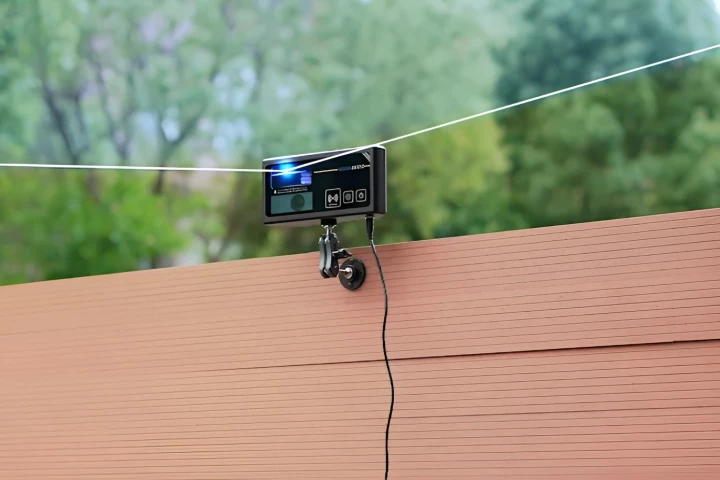Factory wood-cutting robots may be capable of fast and intricate carpentry tasks, but they're expensive – plus they put actual carpenters out of work. A new augmented reality system splits the difference, by precisely guiding the hands of human carpenters.
Developed by Andrea Settimi and colleagues at Switzerland's EPFL university, the open-source setup is appropriately enough known as Augmented Carpentry.
Hardware-wise, it consists mainly of a tablet that is mounted on the third-party saw or other power tool being utilized by the carpenter. That tablet can be swapped from tool to tool as necessary.
Users start by utilizing the tablet's camera to scan each piece of wood they've set aside for the project, thus letting the Augmented Carpentry software know what it has to work with. Next, they place an adhesive-backed marker on each piece – doing so allows the system to identify that piece later on, and to determine its orientation in three-dimensional space.

Finally, the user uploads the plans for the woodworking project. When the carpenter subsequently views any of the pieces of wood on the tablet screen, the object is overlaid with differently colored lines that show exactly where the cuts should be made, along with each cut's depth, angle, length and other information.
Those lines are accurate to within a fraction of a millimeter, and they remain in the same places on the displayed wood even as the camera's perspective shifts along with that of the user. And importantly, the carpenter doesn't need to make any measurements or draw any lines on the wood.

One of the big challenges Settimi's team faced was training the computer-vision algorithms to ignore the non-project-related tools and pieces of wood visible in the background of each shot – a typical workshop or factory is likely to be full of such distractions.
It is hoped that the resulting platform will soon help smaller construction companies compete with larger firms that have bigger budgets, while still employing actual human carpenters in the process.
"By leveraging the potential of human-machine collaboration for modern carpentry and the design of timber structures, Augmented Carpentry can ensure human operators remain involved in the process, thus promoting construction methods that are digitally assisted, local and socially responsible," says Settimi.
Source: EPFL






